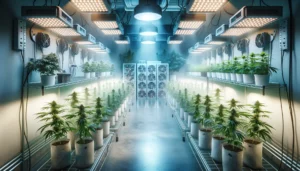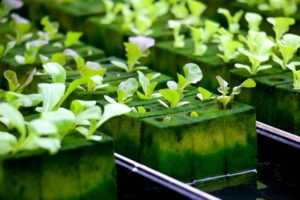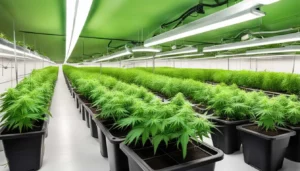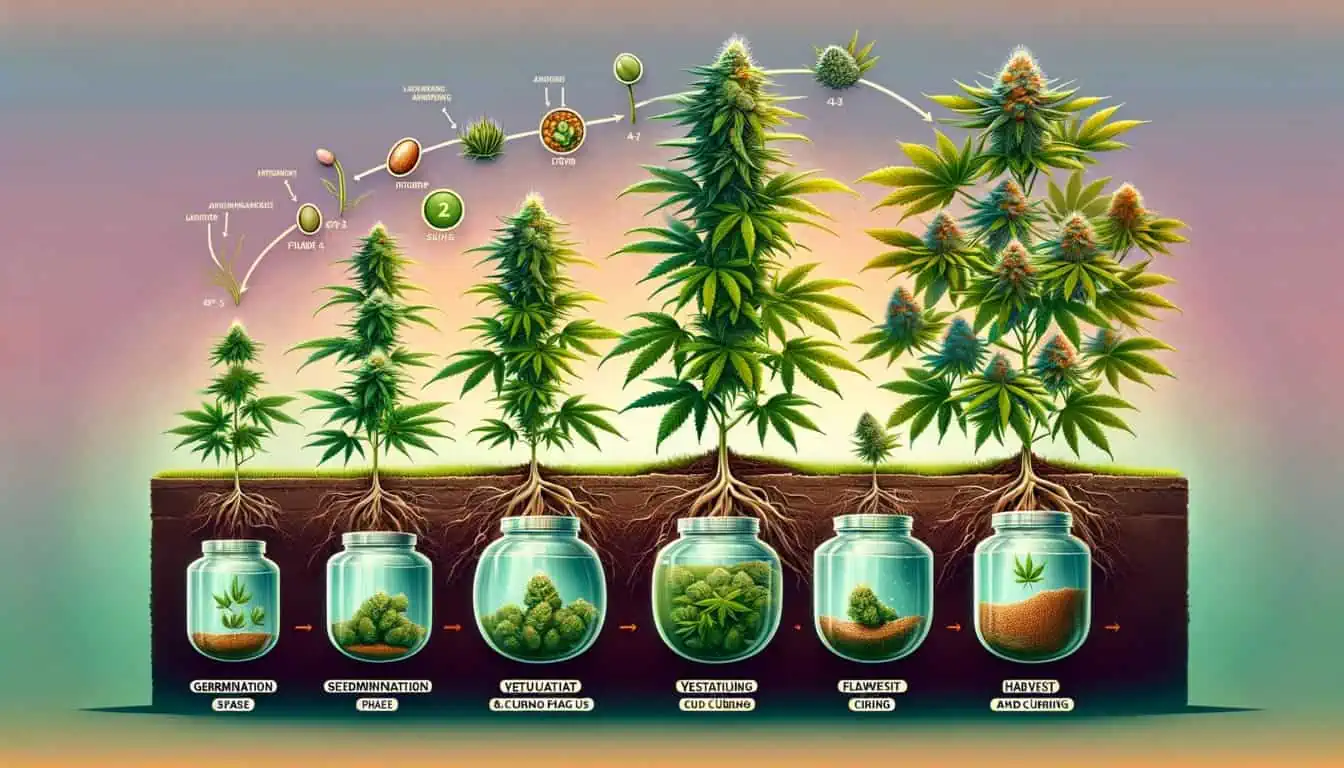Autoflowering cannabis has emerged as a significant breakthrough in cannabis cultivation, revolutionizing the approach to growing cannabis. These plants, unique due to their genetic inheritance from Cannabis ruderalis, automatically switch from the vegetative stage to flowering, independent of light cycles. This characteristic makes them distinct from the traditional photoperiod strains and highly appealing to a broad spectrum of growers.
The allure of autoflowering cannabis lies in its simplicity and efficiency. These plants are known for their relatively short growth cycle and lower maintenance requirements, making them ideal for beginner and experienced growers. Moreover, their compact size makes them suitable for indoor growing spaces where controlling the environment is crucial. This guide delves deep into the world of autoflowering cannabis, offering insights from the initial understanding of the plant to the intricate details of cultivation and harvesting.
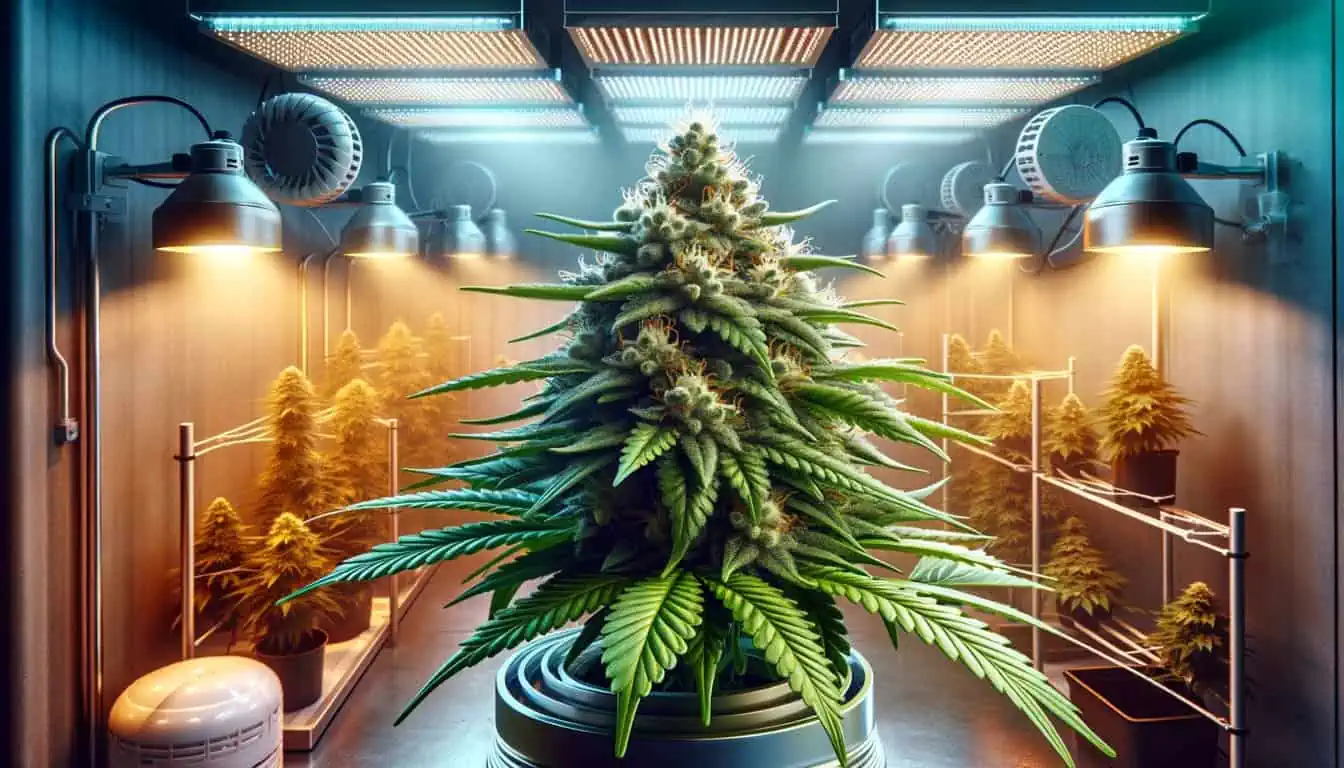
Understanding Autoflowering Cannabis
The Auto-Flowering Phenomenon
Autoflowering cannabis varieties are a product of genetic adaptation and evolution. The key to their unique flowering process lies in their Cannabis ruderalis heritage, a subspecies adapted to the harsh climates and long summer days of northern regions. Unlike the common Cannabis sativa and Cannabis indica, ruderalis varieties developed the ability to flower based on age, not light exposure. This adaptation is what imbues autoflowering cannabis with its most notable characteristic: the ability to flower automatically, regardless of the light schedule.
Genetic Advantages
The incorporation of ruderalis genetics into cannabis strains has not only introduced the autoflowering trait but also significantly increased the plant’s resilience. Autoflowering plants are robust, and often resistant to temperature fluctuations, pests, and diseases that might adversely affect traditional photoperiod strains. Their sturdier nature and shorter growth cycle make them an attractive option for growers in less-than-ideal climates or those who seek a quick turnaround from seed to harvest.
Understanding Growth Patterns
Autoflowering cannabis plants typically have a much shorter life cycle than their photoperiod counterparts. Most autoflowering strains complete their entire growth cycle – from germination to harvest – in about 8 to 10 weeks. This rapid growth means they generally remain small and compact, an advantage for growers with limited space. Despite their quick lifecycle, autoflowers can still produce bountiful and potent yields, with the quality and quantity of the harvest heavily influenced by the growing conditions and care provided throughout their lifecycle.
Selecting the Right Autoflowering Strains
Choosing the right autoflowering strain is pivotal for your cultivation success. Factors such as growth duration, plant size, yield, THC/CBD content, and resistance to environmental stressors vary across strains. For beginners, resilient strains that require less meticulous care are preferable. Researching and understanding the specific needs and characteristics of each strain helps in aligning them with your growing conditions and experience level.
Maximizing Genetic Potential
To maximize the genetic potential of autoflowering plants, start with high-quality seeds from reputable sources. Understanding the plant’s genetic lineage can provide insights into its growth patterns, yield potential, and environmental preferences. Factors like proper light, nutrients, and environmental control play a significant role in expressing the plant’s genetic potential, leading to a successful harvest.
The Role of Terpenes in Autoflowers
Terpenes, the aromatic compounds in cannabis, contribute significantly to the sensory experience. They also potentially influence the effects of cannabis. Autoflowering strains can produce a rich terpene profile. Enhancing terpene production involves fine-tuning factors like light exposure, nutrients, and harvesting time. For instance, slightly stressing plants by altering light and temperature can increase terpene production, enriching the flavor and aroma profile.
The Lifecycle of Autoflowers – A Week-by-Week Guide
Germination (Week 1)
The journey of an autoflowering cannabis plant begins with germination, a critical step that sets the foundation for the plant’s growth. During the first week, the seeds require a warm, moist environment to sprout successfully. It’s essential to provide a stable environment with consistent moisture and temperature to ensure the best start for these seeds. Germination typically takes between 24 to 72 hours. Once the seedlings emerge, they need gentle care, focusing on maintaining the right balance of light, humidity, and temperature to foster healthy growth.
The Seedling Phase (Weeks 2-3)
In the seedling phase, the young plants start to develop their first set of true leaves. This stage is crucial for establishing a robust root system and healthy foliage. Light is vital during this period; however, it should be gentle to avoid overwhelming the delicate seedlings. Consistent monitoring of soil moisture is essential, as overwatering can lead to root rot, hindering the plant’s growth. It’s also the time to start introducing a mild nutrient solution to support their development.
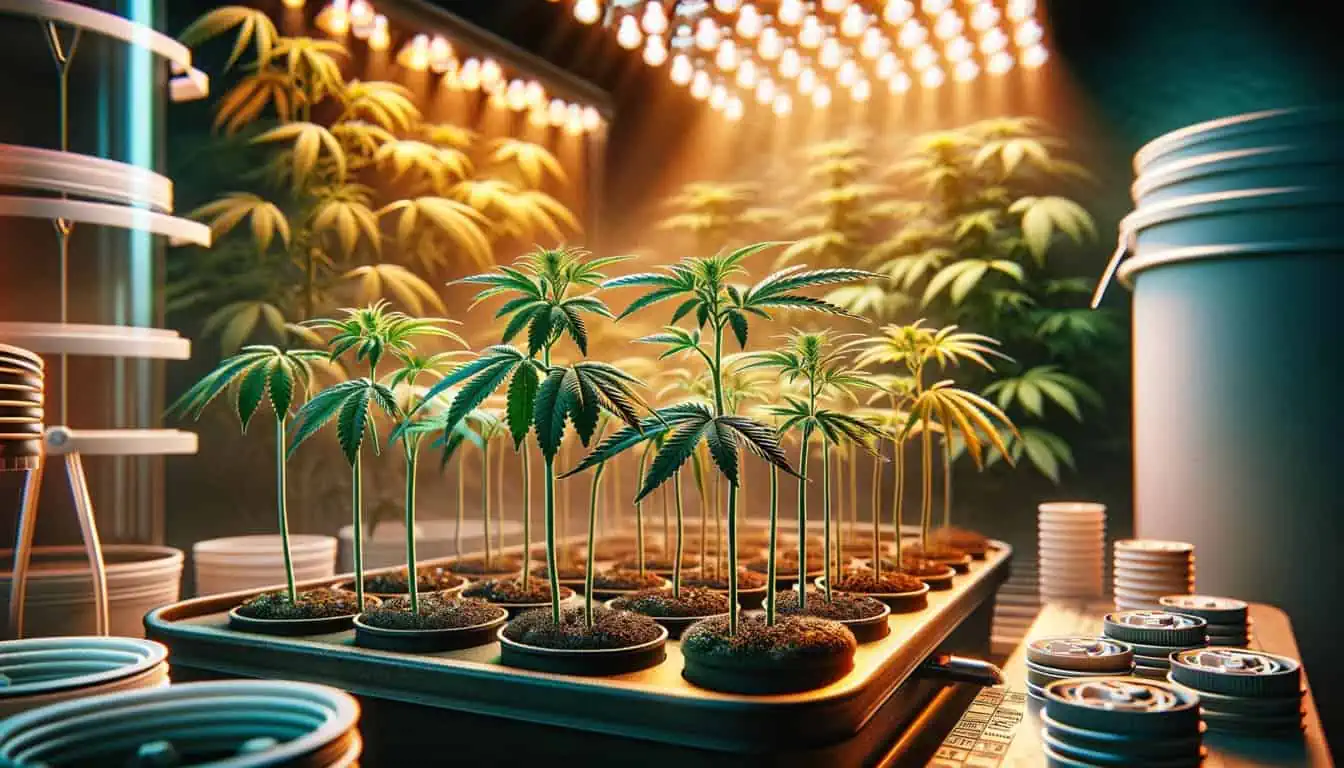
Vegetative Stage (Weeks 4-6)
During the vegetative stage, autoflowering cannabis plants experience rapid growth. This period requires careful attention to nutrition, as the plants need a range of nutrients, particularly nitrogen, to develop strong stems and lush foliage. The vegetative stage is also an opportunity for low-stress training (LST) techniques, which can help manage the plant’s shape and improve light penetration, ultimately leading to a better yield. It’s important to remember that autoflowering plants have a limited vegetative period, so any training should be done with care and timeliness.
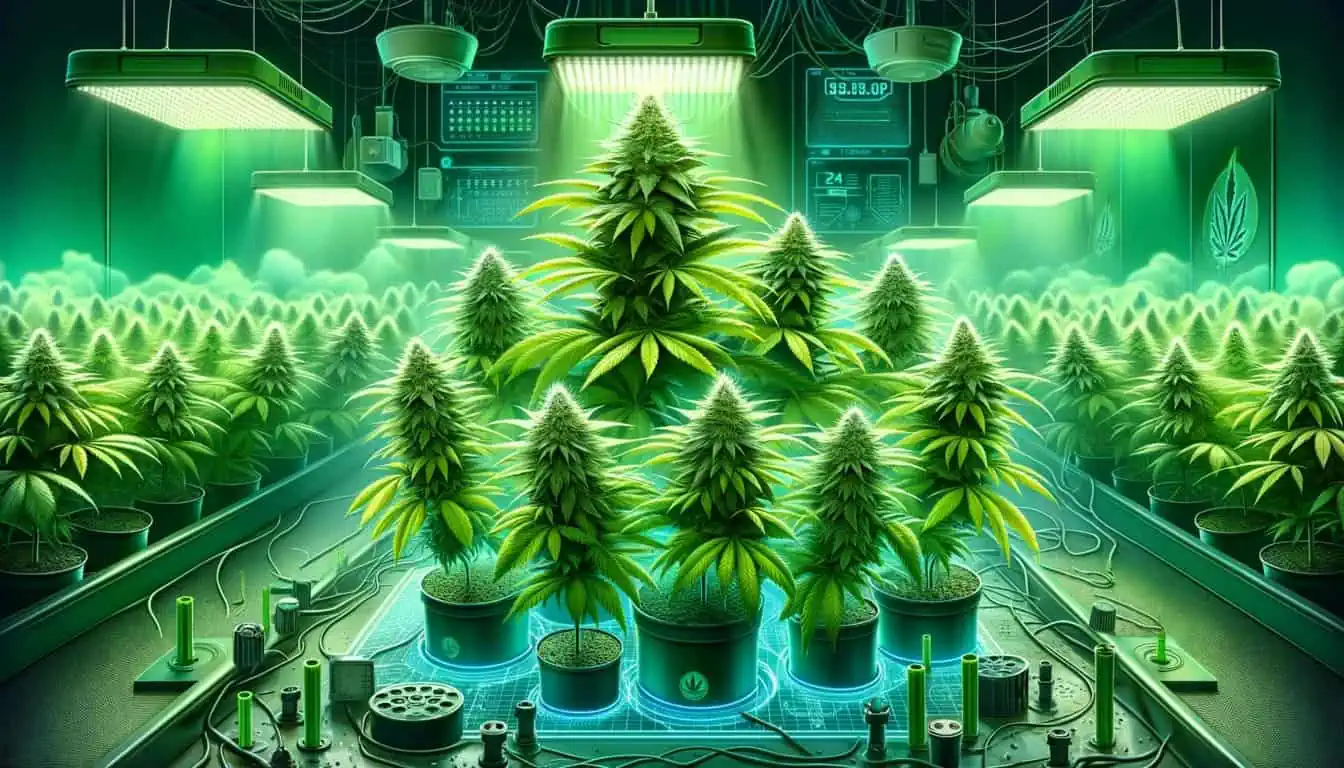
Flowering Stage (Weeks 7-10)
As the plants enter the flowering stage, their nutritional needs shift. Phosphorus and potassium become more important to support bud development. It’s essential to reduce nitrogen levels gradually to avoid nutrient burn. This stage is where the buds form and mature, a process that requires careful monitoring to ensure optimal growth conditions. Adjustments in humidity and temperature may be necessary to mimic the natural shift towards autumn conditions, which can enhance bud quality. The flowering stage is a critical time, and any stress on the plants can impact the final yield and potency of the cannabis.

Mid-Flowering Care (Weeks 8-9)
During mid-flowering, plants require careful monitoring. This phase often demands adjustments in watering and nutrient application. Over-fertilization can lead to nutrient burn, adversely affecting bud development. Monitoring the plant’s response to nutrients and adjusting the feeding schedule is key. Also, ensuring adequate light exposure and air circulation during this phase is crucial for healthy bud development.
Final Stages of Flowering (Week 10 onwards):
In the final stages, buds mature and trichomes develop fully. This period calls for a reduction in nutrient concentration, especially nitrogen, and the introduction of a flushing regime to eliminate excess nutrients, enhancing the purity and flavor of the buds. Monitoring trichome maturity helps determine the ideal harvest time for optimal potency and yield.
Post-Harvest Plant Care
After harvest, the remaining plant structure can still be valuable. Regenerating the plant for a second harvest is possible with autoflowers, although it requires precise care. Alternatively, the remaining biomass can be used as compost or for making cannabis-infused products, ensuring no part of the plant goes to waste.
Optimal Growing Conditions for Autoflowers

Soil and Nutrients
The right soil and nutrient mix is vital for the success of autoflowering cannabis plants. Autoflowers prefer light, airy soil that allows for good root development and efficient drainage. A soil mix rich in organic matter can provide a good balance of nutrients for the initial stages of growth. As the plant matures, supplemental nutrients, particularly those high in phosphorus and potassium, become crucial during the flowering stage. It’s essential to monitor the plants for signs of nutrient deficiencies or excesses and adjust feeding schedules accordingly.
Watering Practices
Proper watering is critical for autoflowers, as they are sensitive to both overwatering and underwatering. The key is to maintain a balance, allowing the soil to dry out slightly between waterings. This approach encourages strong root growth and prevents issues like root rot or mold. The quality of water is also important; using water at the right pH level (ideally between 6.0 and 7.0) can ensure nutrient availability and healthy plant growth.
Lighting
While autoflower cannabis don’t require specific light cycles to flower, they do benefit from ample light to maximize their growth potential. A consistent light schedule of 18-24 hours of light per day is often recommended. This can be achieved using various types of grow lights, with LED lights becoming increasingly popular due to their efficiency and spectrum range. Proper lighting is crucial throughout the plant’s life cycle, but it becomes especially important during the flowering stage to ensure the development of dense, resinous buds.
Enhancing Growth with CO2 Supplementation
In controlled environments, CO2 supplementation can significantly enhance the growth rate and yield of autoflowers. Elevated CO2 levels can increase photosynthesis, leading to faster growth. However, this requires careful monitoring and control systems to maintain optimal levels without harming the plants or the grower.
Managing Microclimates for Autoflowers
Creating and managing microclimates within the grow space can optimize growth conditions for each plant. This involves controlling local variations in temperature, humidity, and airflow. For instance, using fans to circulate air or humidifiers/dehumidifiers to control moisture levels can create ideal microenvironments for autoflowers.
Advanced Soil Techniques
Beyond basic soil mixes, incorporating beneficial microbes like mycorrhizae can enhance nutrient uptake. Customizing soil mixtures to suit specific strains or growth stages can also lead to better growth outcomes. Balancing soil pH is crucial, as it affects nutrient solubility and availability to the plant.
Common Challenges and Solutions in Growing Autoflower Cannabis

Nutrient Burn and Deficiencies
One of the common challenges in growing autoflowers is managing their nutrient needs accurately. Autoflowers are particularly sensitive to over-fertilization, leading to nutrient burn, which can manifest as yellowing or burnt tips on leaves. Conversely, nutrient deficiencies can hinder growth and affect yield. Regular monitoring and understanding of the signs of nutrient imbalances are crucial. Adjusting the nutrient concentration and feeding schedule based on the plant’s growth stage and observed signs can prevent these issues.
Pest and Disease Management
Autoflowers, like all cannabis plants, are susceptible to pests and diseases. Common pests include spider mites, aphids, and thrips, while diseases like powdery mildew and root rot can also pose threats. Prevention is key; maintaining a clean growing environment and monitoring plants regularly can help identify and address issues early. Organic pest control methods and proper air circulation can effectively manage these challenges without harming the plants.
Addressing Environmental Stressors
Autoflowers are generally resilient but still vulnerable to environmental stressors such as extreme temperatures, improper humidity levels, and inadequate lighting. Managing the growing environment to maintain optimal conditions is vital. This includes regulating temperature, ensuring adequate ventilation for humidity control, and providing consistent and appropriate lighting. Stress management is particularly important during the flowering stage, as stress can affect bud development and overall yield.
Pruning and Maintenance Best Practices
While autoflowers require less pruning due to their compact size and rapid growth cycle, some maintenance can be beneficial. Pruning dead or yellowing leaves can improve light penetration and air circulation around the buds. However, it’s important to approach pruning with caution, as excessive pruning can stress autoflowers and hinder their growth. The best practice is to prune sparingly and only when necessary.
Advanced Nutrient Management
Advanced nutrient management involves not just feeding the right nutrients but understanding their interactions and the plant’s changing needs. Using organic nutrients can offer a more gradual nutrient release, reducing the risk of over-fertilization. Tailoring nutrient mixes to the specific growth stage and observing plant responses is key for optimal growth.
Troubleshooting Common Issues
Stunted growth might indicate root problems or nutrient imbalances. Discoloration of leaves can signal deficiencies or diseases. Quick identification and correction of these issues are vital. For instance, yellowing leaves might require a nitrogen boost or pH adjustment in the soil.
Optimizing Plant Health with Beneficial Insects
Introducing beneficial insects like ladybugs for aphid control or predatory mites for spider mite infestations can be an effective organic pest management strategy. This approach not only controls pests but also maintains the ecological balance in the grow environment.
Harvesting and Curing Autoflowering Cannabis
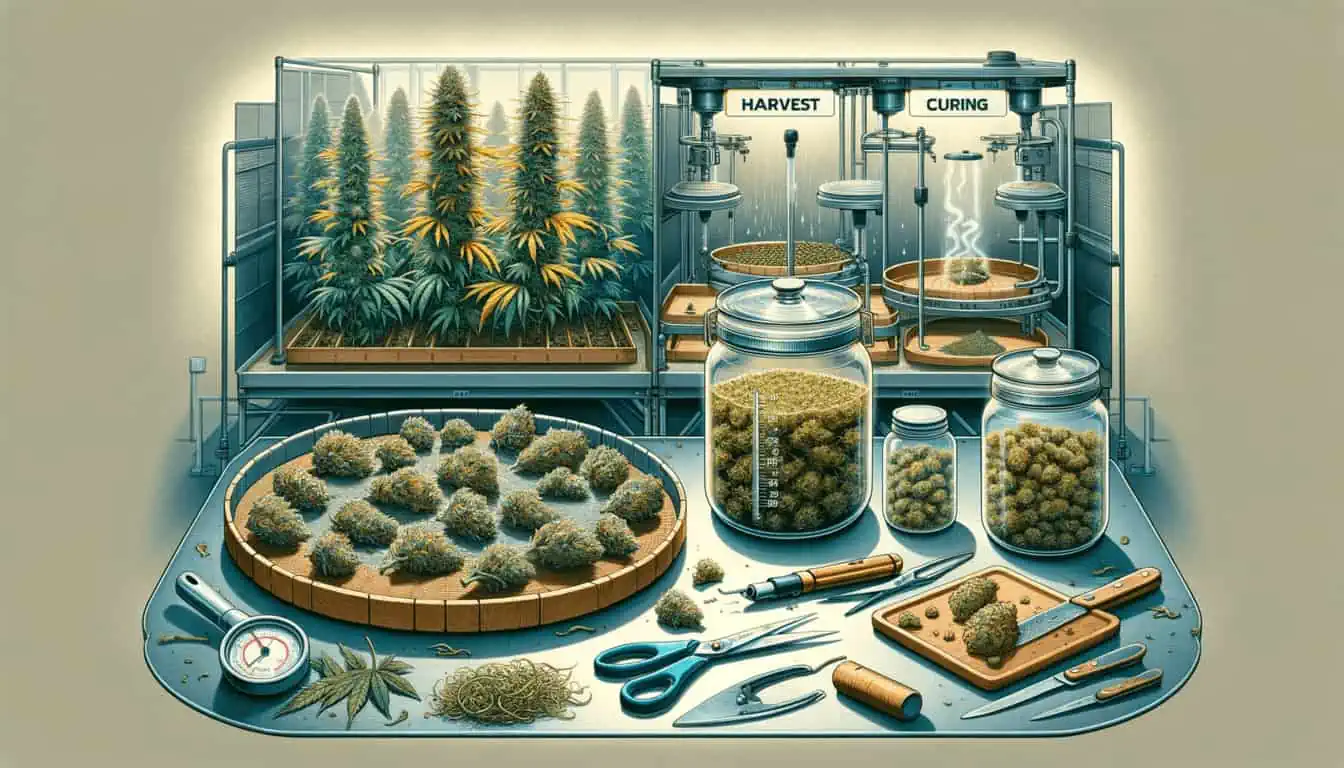
Identifying Harvest Time
Determining the right time for the perfect harvest of autoflowering cannabis is crucial for achieving the desired potency and flavor profile. The primary indicators are the color of the trichomes and the maturity of the buds. Clear trichomes suggest that the plant is not yet ready, while milky or amber trichomes indicate peak maturity. Observing these subtle changes requires a magnifying glass or a jeweler’s loupe.
The Art of Trimming
After harvesting, trimming is the next step. Trimming involves removing the leaves around the buds to enhance their appearance and potency. There are two methods: wet trimming (done immediately after harvesting) and dry trimming (done after the buds have dried). Each method has its advantages, and the choice depends on the grower’s preference and environmental conditions.
Curing Process
Proper curing is essential for developing the full potential of the buds in terms of flavor and potency. Curing involves drying the buds slowly in a controlled environment and then storing them in airtight containers. The containers should be opened regularly to allow for air exchange and to prevent mold. A well-executed curing process can significantly enhance the quality of the final product.
Long-Term Storage Solutions
For long-term storage, maintaining the right environment is key. Buds should be stored in a cool, dark place in airtight containers. Humidity control packets can help maintain the optimal humidity level within the containers, preserving the buds’ quality over time.
The Importance of Proper Drying
Drying is a critical step in preserving the quality of the harvest. Buds should be dried slowly in a controlled environment with adequate ventilation to prevent mold growth. Rushed or improper drying can degrade cannabinoids and terpenes, diminishing the quality of the final product.
Advanced Curing Techniques
Slow curing at controlled humidity levels can significantly enhance the quality of cannabis. This process allows for the gradual breakdown of chlorophyll and the preservation of cannabinoids and terpenes. Methods like jar curing, where humidity and temperature are carefully monitored, can result in a smoother, more flavorful end product.
Utilizing By-Products of Harvest
The by-products of harvest, such as trim and fan leaves, can be utilized in various ways. Trim can be used to make concentrates, edibles, or topicals, while fan leaves can be composted or used in cannabis-infused culinary creations. This holistic approach ensures that every part of the plant is put to good use.
Conclusion
Autoflowering cannabis represents a remarkable advancement in the world of cannabis cultivation. This comprehensive guide aims to provide growers with the knowledge and tools needed to successfully cultivate these unique plants. From selecting the right strain to mastering the harvest and curing process, every detail matters in achieving a successful yield. With the right care and attention, autoflowers offer a rewarding and efficient growing experience, suitable for both personal and commercial cultivation endeavors.

